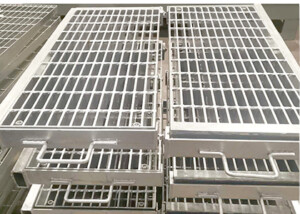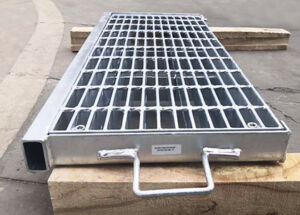Steel grating maintenance is an essential task to ensure the safety and longevity of the grating. Regular inspection and cleaning are crucial to prevent corrosion and damage.
One of the key aspects of steel grating maintenance is to inspect for any signs of wear and tear. This includes checking for loose or damaged bars, as well as any signs of rust or corrosion.
In addition to visual inspection, it is important to conduct regular cleaning of the steel grating. This can be done using a mild detergent and water, followed by thorough rinsing and drying to prevent any water spots or residue.
For areas with heavy foot traffic or exposure to harsh environments, more frequent maintenance may be required. This can include more frequent inspections and cleanings, as well as applying protective coatings to prevent corrosion.

In industrial settings, where steel grating is subject to heavy loads and extreme conditions, regular maintenance is even more critical. This may involve more intensive cleaning methods and the use of specialized coatings for added protection.
Proper maintenance of steel grating not only ensures its durability but also contributes to a safer environment for workers and visitors. By addressing any issues early on, the risk of accidents and injuries can be significantly reduced.
Another important aspect of steel grating maintenance is to address any drainage issues. Accumulation of debris and dirt can lead to clogging, affecting the efficiency of the grating. Regular cleaning and clearing of drainage channels is essential.
In addition to routine maintenance, it is important to address any repairs promptly. Whether it’s replacing damaged bars or addressing structural issues, timely repairs are crucial to maintaining the integrity of the steel grating.
When performing maintenance tasks, it is important to follow the manufacturer’s guidelines and recommendations. This includes using the appropriate cleaning agents, tools, and techniques to avoid causing any damage to the grating.
Regular maintenance also provides an opportunity to assess the overall condition of the steel grating and identify any potential areas of concern. This proactive approach can help prevent more extensive damage and costly repairs in the long run.
In outdoor settings, exposure to elements such as rain, snow, and UV radiation can accelerate the wear and tear of steel grating. Therefore, regular inspections and maintenance are essential to mitigate the effects of weathering.

For steel grating installed in corrosive environments, such as chemical plants or marine facilities, specialized maintenance measures are necessary. This may involve the use of corrosion-resistant materials and coatings for added protection.
In conclusion, steel grating maintenance is a critical aspect of ensuring the performance and longevity of the grating. By implementing regular inspections, cleaning, and repairs, the safety and functionality of the grating can be preserved.

